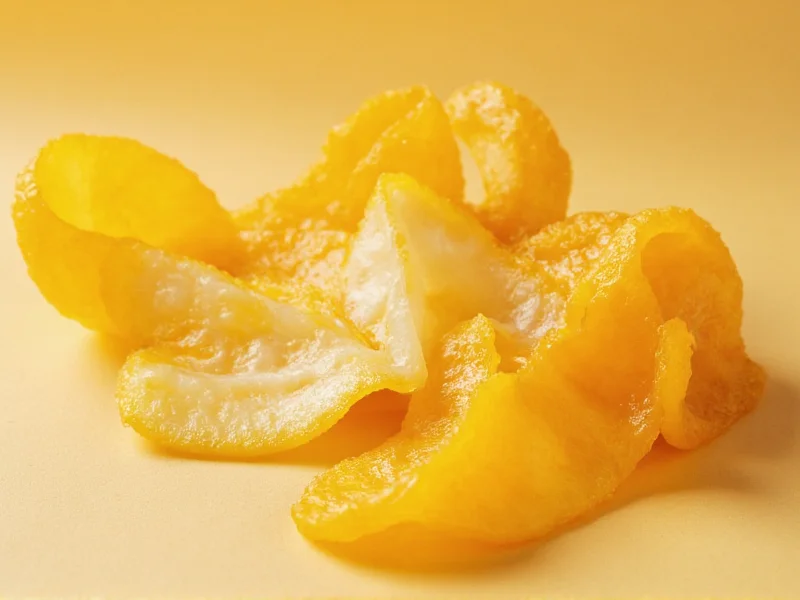A zesty peel isn't just kitchen scraps—it's a flavor powerhouse hiding in plain sight on your citrus fruits. When chefs talk about "zest" versus "peel," they're referring specifically to the thin, oil-rich colored layer (0.5mm thick) that contains aromatic compounds, distinct from the entire peel which includes the bitter white pith. This culinary technique transforms ordinary recipes into extraordinary creations through careful extraction of citrus oils.
What Makes Zest Different From Regular Peel
The magic happens in the flavedo—the outer colored layer packed with essential oils. The white albedo (pith) underneath contains bitter limonin compounds that ruin delicate flavors. Professional chefs achieve perfect zesty peel by removing only the colored portion using specialized tools:
| Tool | Best For | Zest Quality |
|---|---|---|
| Microplane grater | Fine, fluffy zest for baking | ★★★★★ |
| Citrus zester | Thin ribbons for garnishes | ★★★★☆ |
| Vegetable peeler | Large strips for infusions | ★★★☆☆ |
| Knife | Precise control for small batches | ★★★☆☆ |
Step-by-Step Zesting Technique
Follow this professional method for perfect zesty peel every time:
- Choose organic citrus—conventional fruits often have wax coatings that trap pesticides in the peel
- Roll firmly on counter to loosen oil sacs (increases yield by 30%)
- Chill fruits for 20 minutes—cold makes zest easier to remove cleanly
- Work from stem to blossom end using downward strokes to avoid pith
- Stop immediately when white appears—any pith introduces bitterness
Culinary Applications That Shine
Zesty peel elevates dishes through volatile citrus oils that cooking destroys. Unlike juice, these oils survive baking and create complex flavor layers:
- Baking: Incorporate into sugar before creaming for even distribution in cakes and cookies
- Savory sauces: Add at the end of cooking to preserve volatile aromatics
- Cocktails: Express oils over drinks by twisting peel above flame
- Preserves: Combine with sugar to create natural pectin boosters
Research shows lemon zest contains 5x more limonene (the primary flavor compound) than juice, explaining its intense impact. A single teaspoon of properly prepared zesty peel equals the flavor impact of two tablespoons of juice without added liquid.
Storage Methods That Preserve Flavor
Citrus oils degrade rapidly when exposed to air. Maximize shelf life with these techniques:
- Freeze in oil: Mix zest with neutral oil (1:2 ratio) in ice cube trays—lasts 6 months
- Dry for powder: Dehydrate at 140°F (60°C) for 4 hours, then grind—keeps 1 year
- Alcohol preservation: Cover with vodka in airtight container—creates instant extract
Avoid refrigerating plain zest—it absorbs odors and loses potency within 48 hours. For immediate use, store zest in a damp paper towel inside an airtight container.
Common Mistakes That Ruin Zest
Even experienced cooks make these critical errors:
- Using non-organic citrus: Wax seals in pesticides concentrated in the peel
- Zesting too deeply: Just 0.1mm into pith adds detectable bitterness
- Adding too early: Heat destroys volatile oils—stir into batters at the end
- Measuring by volume: Compacted zest varies wildly—weigh for consistency (1 tsp = 2g)
Creative Uses Beyond Baking
Expand your culinary repertoire with these professional techniques:
- Infused salts: Mix equal parts zest and flaky salt, dehydrate overnight
- Compound butters: Blend zest with softened butter and herbs for instant flavor bombs
- Flavored sugars: Layer zest with sugar in jar for 3 days before using
- Homemade citric acid: Ferment zest in water for natural souring agent
When substituting in recipes, remember: 1 teaspoon zest ≈ 2 tablespoons juice in flavor impact but without liquid content. For balanced acidity, pair zest with a small amount of actual juice.
Seasonal Citrus Guide
Maximize flavor by using in-season citrus for zesty peel:
- Winter: Meyer lemons (sweeter, floral notes)
- Spring: Blood oranges (berry-like undertones)
- Summer: Key limes (intense tartness)
- Fall: Cara Cara oranges (rosewater hints)
Off-season citrus often comes from long storage, reducing oil content by up to 40%. Frozen zest from peak season frequently outperforms fresh off-season fruit.











 浙公网安备
33010002000092号
浙公网安备
33010002000092号 浙B2-20120091-4
浙B2-20120091-4